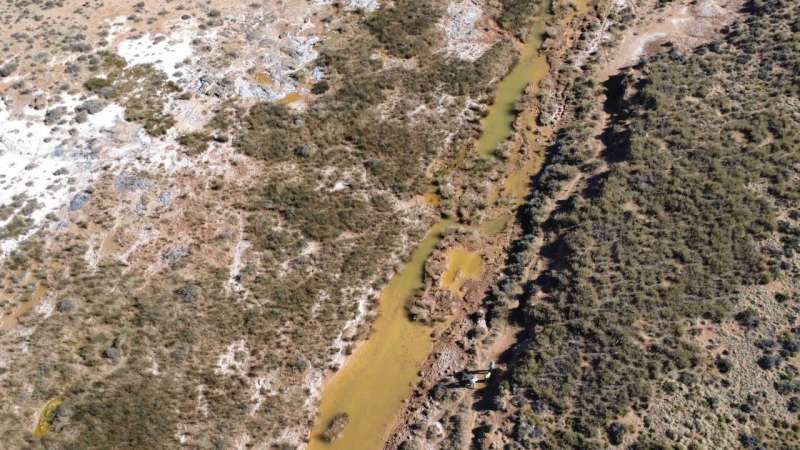Science
Researchers Uncover How Human Activity Impacts River Ecosystems

Freshwater ecosystems, particularly rivers, are undergoing significant changes due to various human activities. A comprehensive study led by Dr. Willem Kaijser from the University of Duisburg-Essen has provided crucial insights into how specific stressors, such as agriculture, wastewater management, and climate change, affect river biodiversity. This research, published in Nature Ecology & Evolution, marks a significant advancement in understanding the relationships between environmental stressors and aquatic life.
The research team, which operates within the RESIST Collaborative Research Center coordinated by the German Research Foundation, reviewed more than 22,000 scientific articles and analyzed 1,332 data sets from 276 studies. Their findings highlight the complex interplay of stressors affecting five key groups of riverine organisms: microorganisms, algae, aquatic plants, invertebrates, and fish.
Key Stressors Impacting Biodiversity
The study identified that biodiversity within these groups is most significantly affected by increased salinity, oxygen depletion, and excessive sedimentation. These stressors often co-occur, leading to deteriorating conditions for aquatic life. For instance, the combination of metabolic stress and silted habitats can severely impact species survival.
Interestingly, the effects of certain stressors, such as nutrient enrichment and temperature increases, vary across different species. Some algae thrive with moderate nutrient levels, which can enhance their growth and diversity. In contrast, macrophytes experience a decline in diversity with rising salinity or nutrient concentrations. Furthermore, invertebrates and fish populations are particularly vulnerable to oxygen depletion and the accumulation of fine sediments that cover their habitats.
The research team employed statistical models and probability theories to elucidate these relationships, revealing that while patterns differ across regions and organism groups, critical trends are emerging that can guide conservation efforts.
Implications for Conservation Efforts
According to Prof. Dr. Daniel Hering, a senior researcher involved in the study, “Salinization, sediments, and oxygen deficiency are almost always harmful.” The analyses conducted in this study provide a framework for quantifying these relationships, allowing for predictive modeling that can inform future conservation strategies.
These findings underscore the urgent need for targeted interventions to protect freshwater ecosystems, which are vital for biodiversity and human livelihoods. Understanding the specific impacts of various stressors can help policymakers and conservationists develop more effective strategies to address the ongoing threats to river ecosystems.
For more detailed information, the full study is available in Nature Ecology & Evolution under the title “Meta-analysis-derived estimates of stressor–response associations for riverine organism groups” by Willem Kaijser et al. (2025).
-

 Technology5 months ago
Technology5 months agoDiscover the Top 10 Calorie Counting Apps of 2025
-

 Health2 months ago
Health2 months agoBella Hadid Shares Health Update After Treatment for Lyme Disease
-

 Health3 months ago
Health3 months agoErin Bates Shares Recovery Update Following Sepsis Complications
-

 Technology4 months ago
Technology4 months agoDiscover How to Reverse Image Search Using ChatGPT Effortlessly
-

 Technology1 month ago
Technology1 month agoDiscover 2025’s Top GPUs for Exceptional 4K Gaming Performance
-

 Technology2 months ago
Technology2 months agoElectric Moto Influencer Surronster Arrested in Tijuana
-

 Technology5 months ago
Technology5 months agoMeta Initiates $60B AI Data Center Expansion, Starting in Ohio
-

 Technology5 months ago
Technology5 months agoRecovering a Suspended TikTok Account: A Step-by-Step Guide
-

 Health4 months ago
Health4 months agoTested: Rab Firewall Mountain Jacket Survives Harsh Conditions
-

 Lifestyle5 months ago
Lifestyle5 months agoBelton Family Reunites After Daughter Survives Hill Country Floods
-

 Technology4 months ago
Technology4 months agoHarmonic Launches AI Chatbot App to Transform Mathematical Reasoning
-

 Technology3 months ago
Technology3 months agoUncovering the Top Five Most Challenging Motorcycles to Ride











